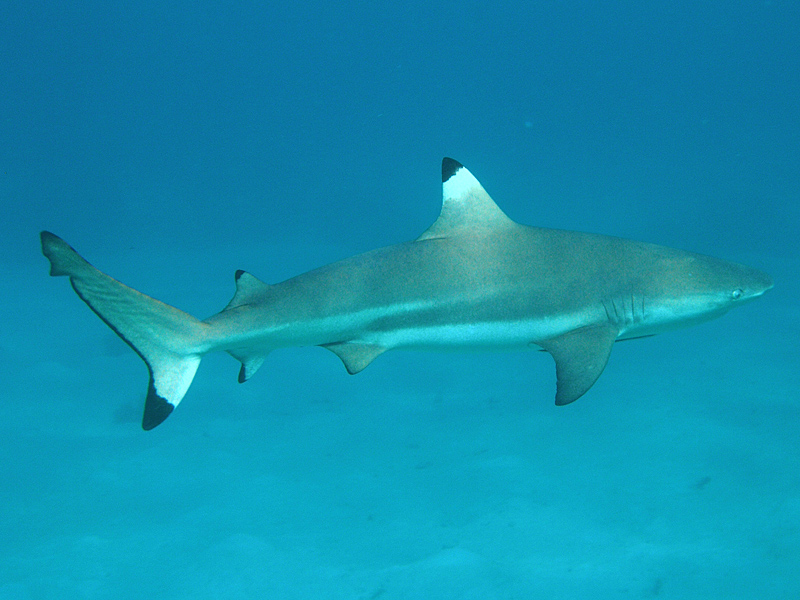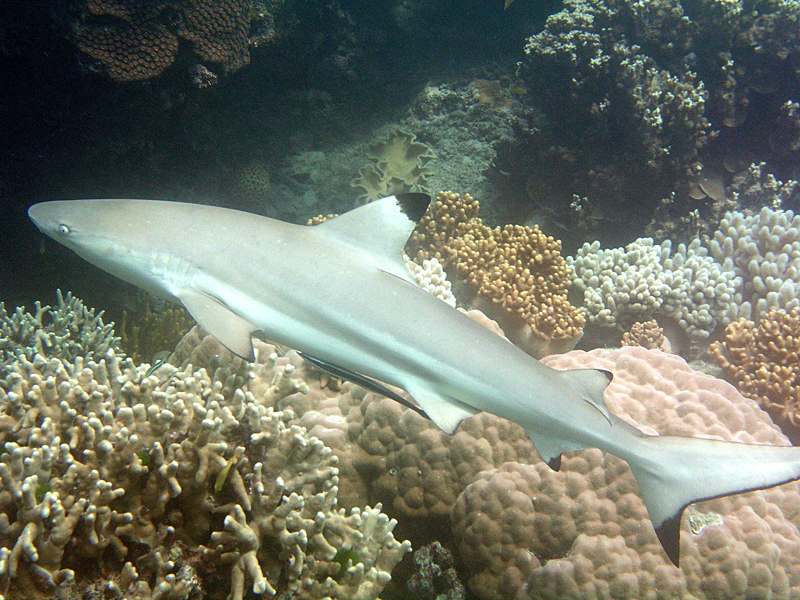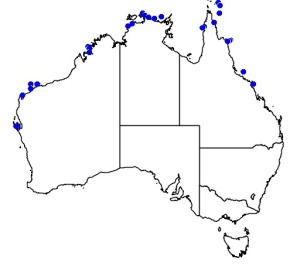�
�
�
���
Carcharhinus melanopterus
Blacktip Reef Shark
Kingdom
Animalia
Phylum
Chordata
Class
Elasmobranchii
Order
Carcharhiniformes
Family
Carcharhinidae
Genus
Carcharhinus
Species
Carcharhinus melanopterus
Colours
Distinguishing features
A small to medium sized shark with a streamlined bronze body and whitish underparts. There are black tips to all fins.
Size
- Size data has not been obtained.
Depth range
- Depth range data is not yet available.
Synonyms
Similar taxa
-
Animalia:
Common Blacktip Shark (species: Carcharhinus limbatus)
The reef shark is more streamlined than this species and does not have the clear black tips on the pectoral fins. -
Animalia:
Australian Blacktip Shark (species: Carcharhinus tilstoni)
The reef shark is more streamlined than this species and does not have the clear black tips on the pectoral fins.
Distribution
Distribution and habitat preferences
Shallow reef flats and slopes, lagoonal and backreef patches. Small individuals will move into mangrove areas and shallow intertidal reef flats.
Can be seen in most locations around the Island.
Behaviour
The Blacktip Reef Shark is usually seen singly or in pairs over shallow reef areas. It feeds on reef fishes, cephalopods, and crayfish and is mainly active at night, although this species will feed in the daytime as well. Blacktip Reef Shark are viviparous and give birth to 2-4 juveniles per litter, and these are about 50cm at birth after a gestation of 280-300 days.
Web resources
References
- Haine, O.S., P.V. Ridd and R.J. Rowe (2001). Range of electrosensory detection of prey by Carcharhinus melanopterus and Himantura granulata, Mar Freshw Res, 52: 291-6. LIRS catalog number 90006.
- Martin, R.A. (2007). A review of shark agonistic displays: comparison of display features and implications for shark-human interactions, Marine and Freshwater Behaviour and Physiology, 40: 3-34. LIRS catalog number 90001.
- Papastamatiou, Y.P., B.M. Wetherbee, C.G. Lowe and G.L. Crow (2006). Distribution and diet of four species of carcharhinid shark in the Hawaiian Islands: evidence for resource partitioning and competitive exclusion, Marine Ecology Progress Series, 320: 239-251. LIRS catalog number 90003.
- View all references




